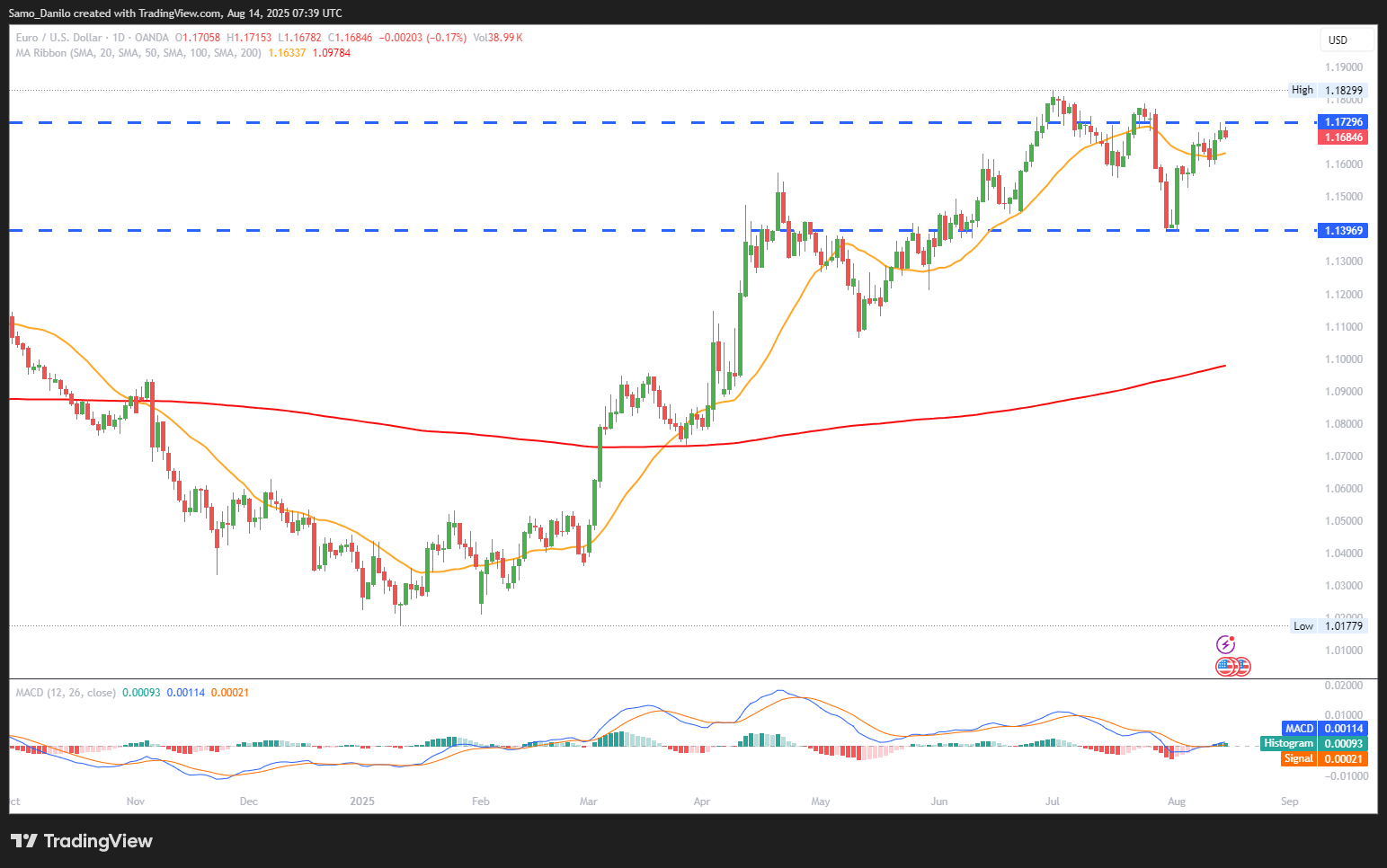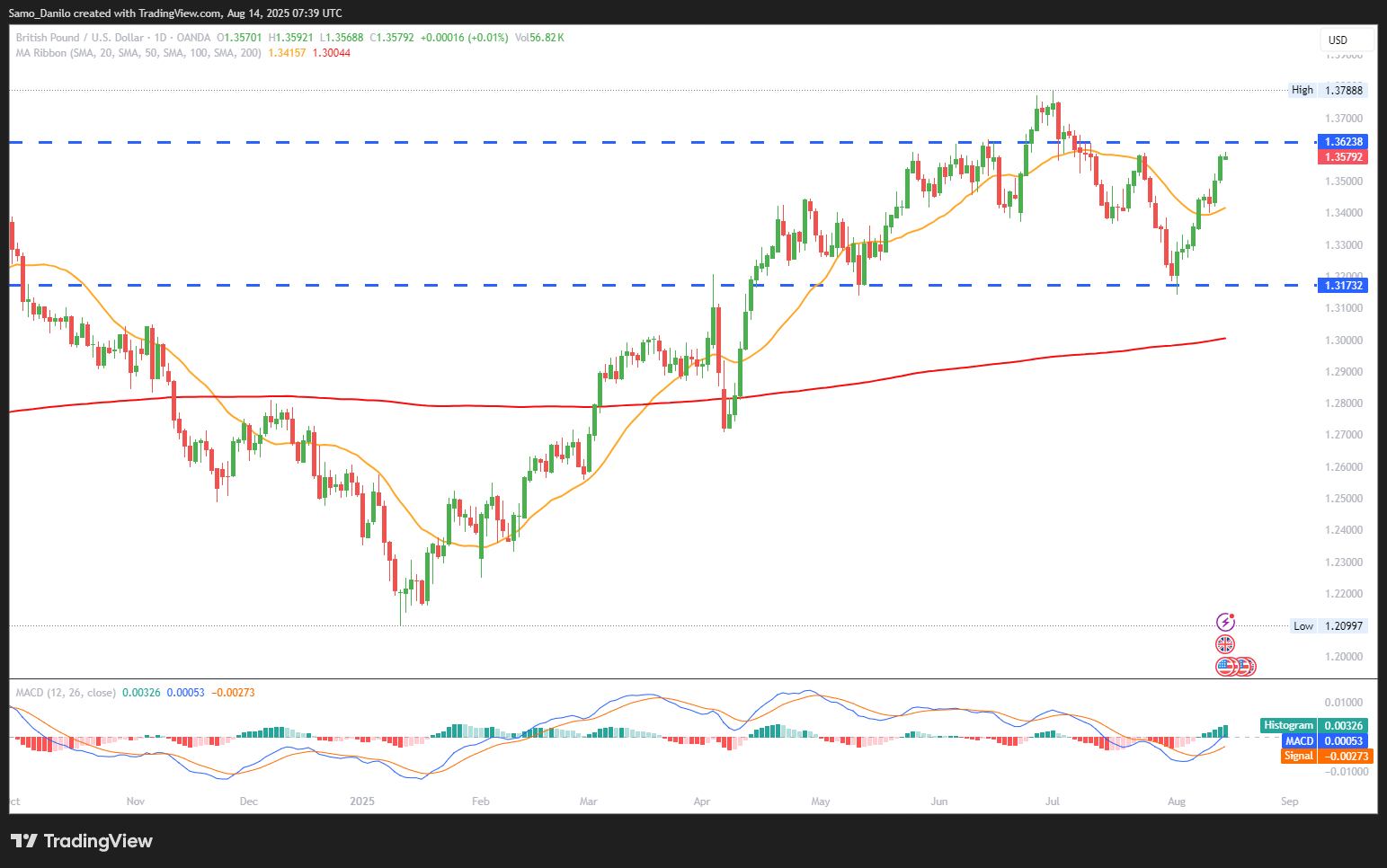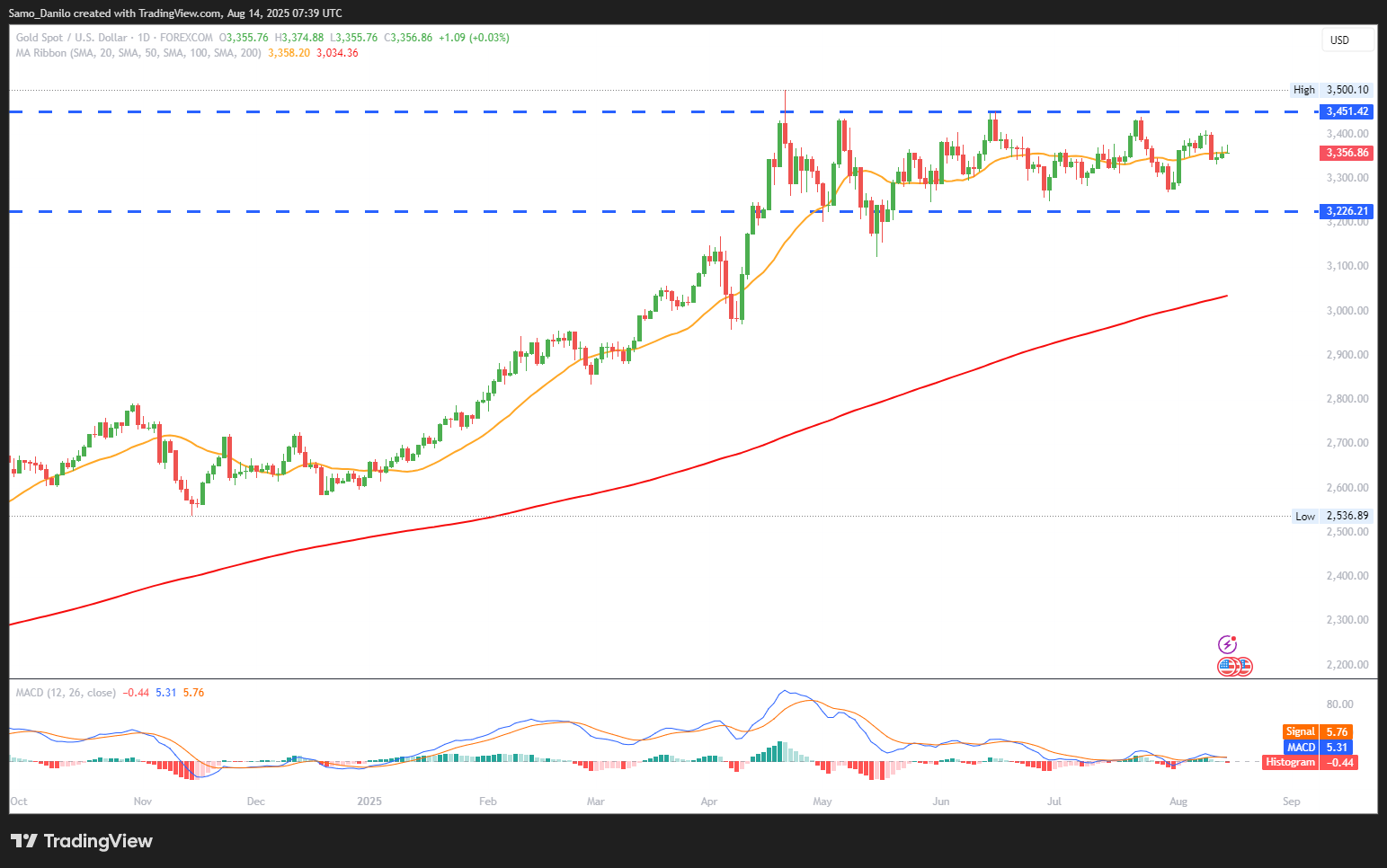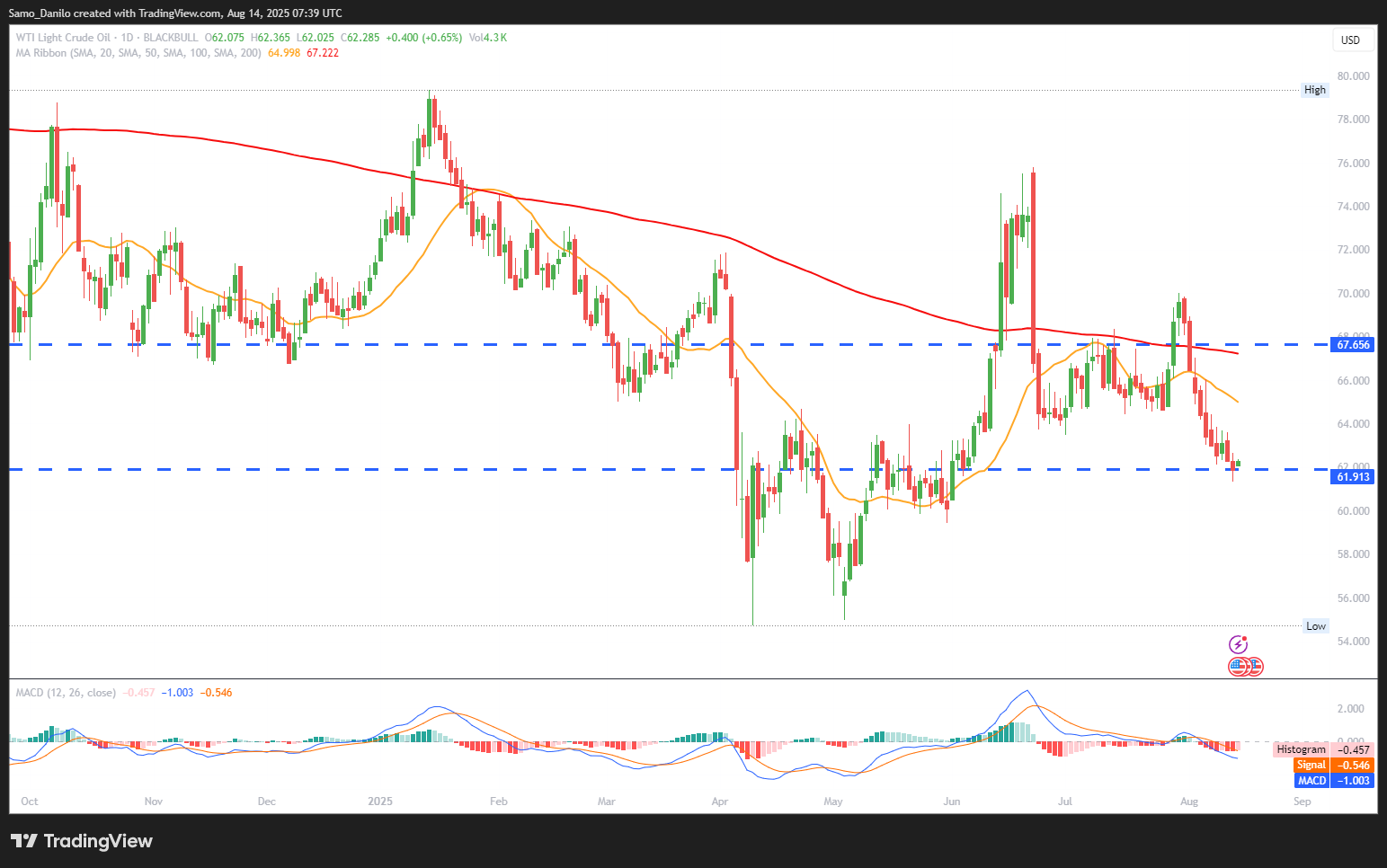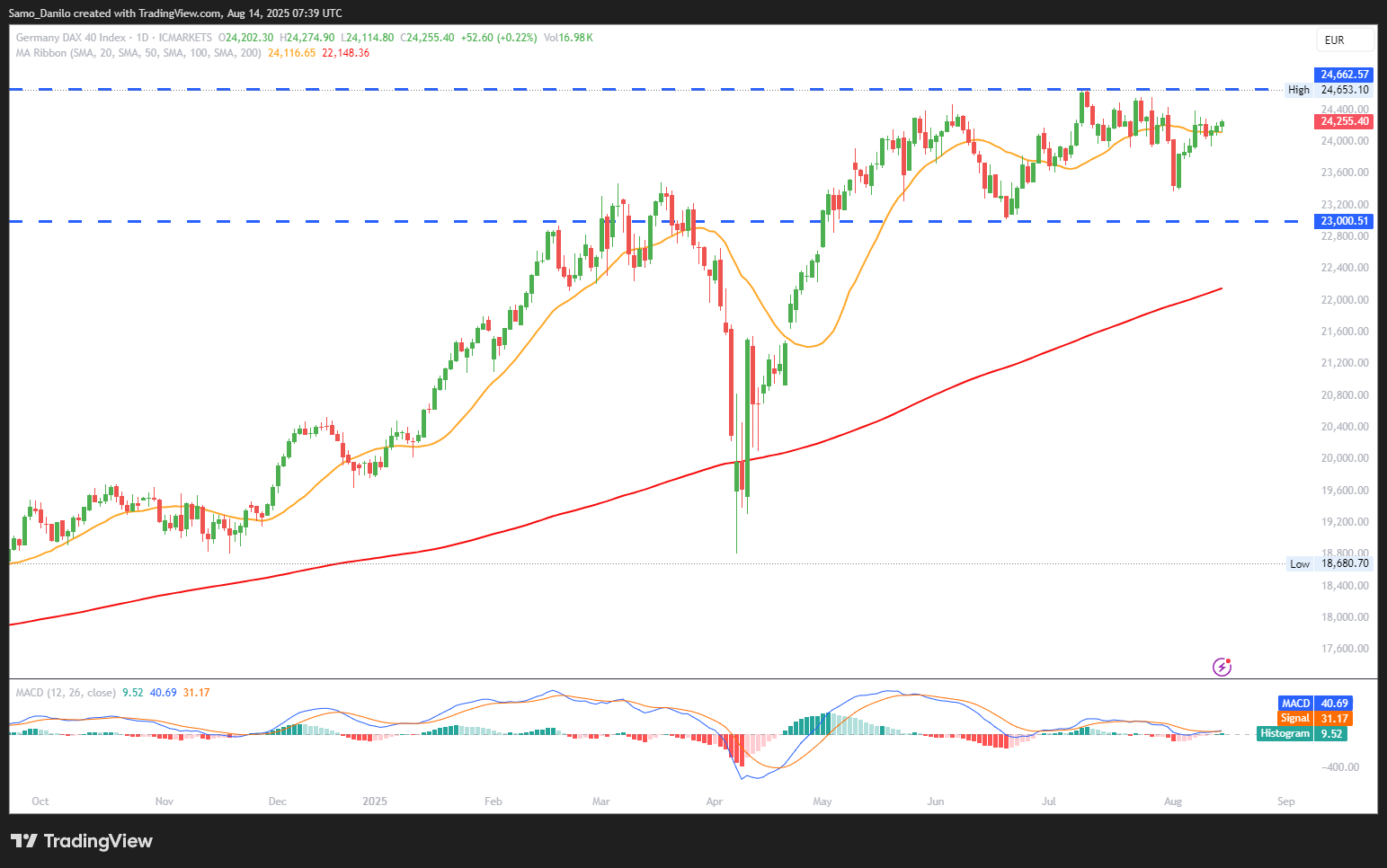EURUSD
- EUR/USD Price: The Euro extended gains for a second straight session on Wednesday, pushing above 1.1700 to a nearly three-week high. The move was driven primarily by broad US Dollar weakness in global FX markets.
- US Fiscal Concerns: A US Treasury report showed national debt surpassing $37 trillion for the first time, with CBO projections indicating an additional $4.1 trillion in debt over the next decade due to recent legislation. This deterioration in fiscal metrics pressured the USD.
- US Rate Cut: A softer-than-expected US inflation reading earlier this week reinforced expectations for a September Fed rate cut, weakening the dollar and supporting GBP/USD earlier in the session.
- ECB’s Stance: Market participants increasingly expect the ECB to maintain interest rates at elevated levels for an extended period, helping to anchor euro strength despite external headwinds.
- Labour Market: Investors await the second estimate of Q2 GDP and the first estimate of Q2 employment, with employment expected to show a modest increase—pointing to ongoing labour market resilience.
Closing statement: EUR/USD remains supported above $1.1700 as US fiscal risks and ECB policy divergence favor the euro, with upcoming euro area labour data potentially reinforcing the bullish tone.
GBPUSD
- GBP/USD Price: GBP/USD retreated in early European trading Thursday after testing the 1.3600 level, as market participants booked profits ahead of upcoming US data releases.
- UK Q2 GDP: UK GDP grew 0.3% QoQ in Q2 2025, down from 0.7% in Q1 but better than the 0.1% expected. The stronger-than-anticipated figure eased some concerns over an imminent slowdown.
- Other UK Data: The Index of Services held steady at 0.4% 3M/3M in June, while Industrial Production and Manufacturing Production rebounded by 0.7% and 0.5% respectively, suggesting underlying economic strength.
- UK Housing Data: The RICS house price balance fell sharply to -13 from -7 in June, missing expectations of -5. This marks the weakest reading since July 2024 and adds to a softer global macro tone.
- PPI Data: Traders await Thursday’s US PPI report, with forecasts calling for +2.5% YoY on the headline reading and +2.9% YoY for core PPI. Surprises could impact Fed policy expectations and USD direction.
Closing statement: GBP/USD is consolidating below 1.3600 as UK growth resilience supports the pound, while US inflation and PPI data keep Fed rate cut bets alive, leaving the pair sensitive to upcoming US releases.
XAUUSD
- XAU/USD Price: Gold climbed toward $3,370/oz on Wednesday, marking a two-day high, before easing back to around $3,360 amid profit-taking. Gains were driven by broad US Dollar weakness.
- Political Pressure: President Trump intensified criticism of Fed Chair Jerome Powell, hinting at a possible lawsuit over alleged mismanagement of Fed building projects. The remarks added to political uncertainty and dollar softness.
- Geopolitical Risks: US Treasury Secretary Scott Bessent warned of possible sanctions or secondary tariffs if Trump’s meeting with Russian President Putin falters, keeping geopolitical risk in focus for gold traders.
- Chinese Data: China’s credit growth missed expectations at 23.99T CNY YTD vs 24.456T forecast, but money supply growth surprised to the upside with M2 at 8.8% YoY and M1 at 5.6% YoY, painting a neutral overall picture.
- Fed Commentary: Richmond Fed President Thomas Barkin, set to speak Thursday, recently suggested that inflation may not be as high as many expect, a stance that could reinforce dovish market sentiment.
Closing statement: Gold remains supported by dollar weakness, political tensions, and geopolitical risks, though gains were capped by a late-session pullback, keeping $3,370 as the immediate resistance to watch.
CRUDE OIL
- Crude Oil Price: West Texas Intermediate (WTI) crude oil rose to $62.23/bbl early Thursday in European trading, slightly above Wednesday’s close of $62.10.
- Geopolitical Risks: President Trump warned of “severe consequences” if Russia’s President Putin fails to agree to peace in Ukraine at Friday’s Alaska summit, stressing Ukraine’s role in any territorial decisions.
- Fed Balance: US central bankers face growing concern over a sharp slowdown in hiring over the past three months, as they weigh policy between supporting employment and maintaining price stability.
- IEA Outlook: The IEA raised its 2025 oil supply growth forecast to +2.5 million bpd, with a further +1.9 million bpd in 2026. Demand growth remains weak, now projected at just +680,000 bpd in 2025 and +700,000 bpd in 2026.
- Iranian Oil: Washington aims to cut Iran’s oil exports to near zero to choke funding for its nuclear program and weaken the IRGC, with China highlighted as a key buyer of Iranian crude.
Closing statement: Crude prices remain supported by geopolitical tensions, but a weak demand outlook from the IEA could cap upside momentum unless supply risks intensify.
DAX
- DAX Price: The DAX trades near 24,170 points, down 0.12% Thursday, after gains the previous day brought it back to last week’s levels.
- Index Stocks: Commerzbank (+0.84%) and Deutsche Bank (+0.27%) led bank sector gains on August 14. Insurers also recovered from recent earnings-related pullbacks, with Hannover Re (+0.54%) and Munich Re (+0.25%) posting modest advances.
- Eurozone Data: Markets await Q2 Eurozone employment and industrial production figures early in the session. Employment is expected to rise 0.1% QoQ, slowing from +0.2% in Q1.
- US Data: Later Thursday, US producer price index (PPI) and jobless claims could shape risk sentiment. PPI is forecast to rise 2.5% YoY in July, up from 2.3% in June.
- Geopolitical Tensions: Traders remain alert to the Alaska meeting between Presidents Trump and Putin, aiming to end the war in Ukraine, which has disrupted global oil markets since February 2022.
Closing statement: The DAX is consolidating gains as investors await key macro data and monitor geopolitical headlines, particularly the high-stakes US–Russia meeting.
